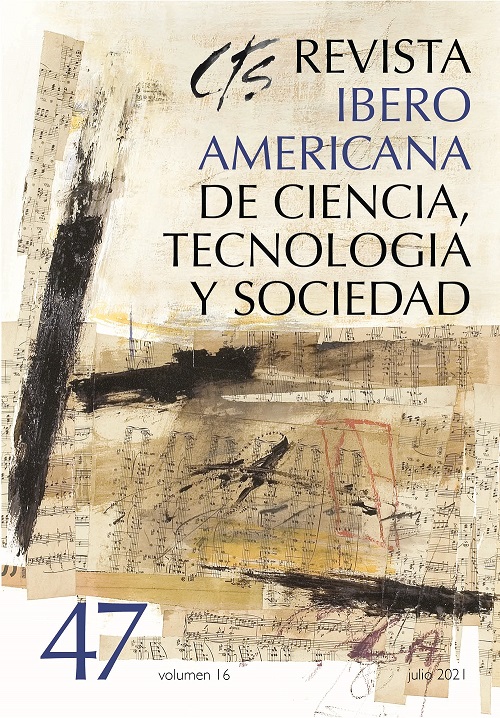A General Approach to the Development of Autonomous Cars
Keywords:
autonomous cars, artificial intelligence, mobility, culture, advantages, disadvantagesAbstract
The purpose of this article is to carry out an introductory approach to the field of autonomous cars. Firstly, a brief historical review is set forth to detail its progress. Secondly, the importance of artificial intelligence research for the development of this autonomous technology is highlighted. Autonomous cars spark a cultural change in mobility that comes with advantages, opportunities, risks and threats that must be subjected to analysis. For this reason, it is necessary to carry out a general approach to the development of autonomous cars as a technological innovation that will influence life in the future in terms of mobility and time management.Downloads
References
Awad, E., Dsouza, S., Kim, R., Schulz, J., Henrich, J., Shariff, A., Bonnefon, J.-F. y Rahwan, I. (2018). The Moral Machine experiment. Nature, 563, 59-64. Recuperado de: https://www.nature.com/articles/s41586-018-0637-6.
Barclays (2015). Disruptive Mobility: A Scenario for 2040. Recuperado de:: https://www.investmentbank.barclays.com/content/dam/barclaysmicrosites/ibpublic/documents/investment-bank/global-insights/barclays-disruptive-mobility-pdf-120115-459kb.pdf.
Barclays (2016). Driverless vehicles: A new engine for economic transformation? Recuperado de: https://www.barclayscorporate.com/content/dam/barclayscorporate-com/documents/insights/innovation/barclays-corporate-driverless-vehicles-oct-2016.pdf.
Bauman, Z. (2017). Modernidad líquida. Madrid: Fondo de Cultura Económica de España.
Berbouch, M. (2018). Uber Self-Driving Car Crash: What Really Happened. Forbes, 28 de mayo. Recuperado de: https://www.forbes.com/sites/meriameberboucha/2018/05/28/uber-self-driving-car-crash-what-really-happened/#708feea4dc41.
Bogost, I. (2014). The Secret History of the Robot Car. The Atlantic, noviembre. Recuperado de: https://www.theatlantic.com/magazine/archive/2014/11/the-secret-history-of-the-robot-car/380791/.
Checkoway, S., McCoy, D., Kantor, B., Anderson, D., Shacham, H. y Savage, S. (2011). Comprehensive Experimental Analyses of Automotive Attack Surfaces. Recuperado de: http://www.autosec.org/pubs/cars-usenixsec2011.pdf.
Coeckelbergh, M. (2011). From Killer Machines to Doctrines and Swarms, or Why Ethics of Military Robotics Is not (Necessarily) About Robots. Philosophy & Technology, 24, 269-278.
Collins, H. M. (1990). Artificial Experts. Cambridge: MIT Press.
Comisión Europea (2009). Vehicle Event Recording base don Intelligent Crash Assessment. Recuperado de: https://ec.europa.eu/transport/road_safety/sites/roadsafety/files/pdf/projects_sources/veronica2_final_report.pdf.
DickmannI, J., Appenrodt, N. y Brenk, C. (2014). Making Bertha: Radar is the key to Mercedes-Benz’s robotic car. IEEE Spectrum, 44–49.
Diéguez, A. (1993). Tecnología y responsabilidad. Revista de Filosofía, 9, 189-200.
Durán Heras, M. A. (2010). Tiempo de vida y tiempo de trabajo. Madrid: Fundación BBVA. Recuperado de: http://digital.csic.es/bitstream/10261/101047/3/Duran_Tiempo_vida_trabajo.pdf.
Durán Heras, M. A. (2012). El trabajo no remunerado en la economía global. Madrid: Fundación BBVA. Recuperado de: http://digital.csic.es/bitstream/10261/76517/3/Duran_Trabajo_No_Remunerado.pdf.
Ethical Hacking New Tutorials (2016). Hacking a Car with an Ex NSA Hacker CYBERWAR Clip YouTube. Youtube. Recuperado de: https://www.youtube.com/watch?v=OlP8An2t15w.
Kumar Amara, D., Renu Chebrolu, N., Vinayakumar, R. y Soman, K. (2018). A Brief Survey on Autonomous Vehicle Possible Attacks, Exploits and Vulnerabilities. Recuperado de: https://www.researchgate.net/publication/328189443_A_Brief_Survey_on_Autonomous_Vehicle_Possible_Attacks_Exploits_and_Vulnerabilities.
Lee Sayton, E. (2011). Driverless Dreams: Technological Narratives and the Shape of the Automated Car. MIT Press.
Limón, R. (2018). El coche del accidente mortal de Uber tenía inhabilitada la frenada de emergencia. El País, 12 de junio. Recuperado de: https://elpais.com/tecnologia/2018/06/12/actualidad/1528798311_923424.html.
Massachusetts Institute Of Technology (2016). Moral Machine. Disponible en: http://moralmachine.mit.edu/hl/es.
Maxmena, A. (2018). Self-driving car dilemas reveal that moral choices are not universal. Nature.
McKinsey & Company (2017). Self-driving car technology: When Will the robots hit the road? Our Insights. Recuperado de: https://www.mckinsey.com/industries/automotive-and-assembly/our-insights/self-driving-car-technology-when-will-the-robots-hit-the-road.
Moisés, B. A. (2019). Consideraciones jurídicas acerca del coche autónomo. Actualidad Jurídica Uría Menéndez, 52, 101-108.
Novak, M. (2013). The National Automated Highway System That Almost Was. Smithsonian. Recuperado de: http://www.smithsonianmag.com/history/thenational-automated-highway-system-that-almost-was-63027245/.
Organización de Naciones Unidas (2015). Objetivos de Desarrollo Sostenible. Recuperado de: https://www.undp.org/content/undp/es/home/sustainable-development-goals.html.
Park, S. y Choi, J.-Y. (2020). Malware Detection in Self-Driving Vehicles Using Machine Learning Algorithms. Journal of Advanced Transportation, 3, 1-9.
Parkinson, S., Ward, P., Wilson, K. y Miller, J. (2017). Cyber Threats Facing Autonomous and Connected Vehicles: Future Challengues. IEEE Transactions on Intelligente Transportation Systems, 18(11).
Peña, M. (2018). Waymo explica el rol esencial de la inteligencia artificial en la tecnología autónoma. Digital Trends, 8 de mayo. Recuperado de: https://es.digitaltrends.com/autos/waymo-inteligencia-artificial-autos-autonomos/.
Rouhiainen, L. (2018). Inteligencia artificial. 101 cosas que debes saber hoy sobre nuestro futuro. Barcelona: Editorial Planeta.
Ruiz Domínguez, F. (2017). La implantación del automóvil inteligente: ¿un riesgo calculado para la seguridad global? Madird: Instituto Español de Estudios Estratégicos. Recuperado de: http://www.ieee.es/Galerias/fichero/docs_opinion/2017/DIEEEO60-2017_Automovil_Inteligente_FRuizDominguez.pdf.
SAE International (2019). Levels of Driving. Recuperado de: https://www.sae.org/news/2019/01/sae-updates-j3016-automated-driving-graphic.
Sánchez, C. (2018). Parar de investigar el coche autónomo por los accidentes sería un gran error. Eldiario.es, 12 de abril. Recuperado de: https://www.eldiario.es/hojaderouter/movilidad/Parar-investigar-coche-autonomo-accidentes_0_760124707.html.
Ulmer, B. (1994). VITA II - Active Collision Avoidance in Traffic. Proceedings of the Intelligent Vehicles. 94 Symposium, 1-6.
Walker, J. (2014). Robots Don’t Drink and Drive. Recuperado de: https://rmi.org/robots-dont-drink-drive/.
Wetmore, J. (2003). Driving the Dream: The History and Motivations Behind 60 Years of Automated Highway Systems. Automotive History Review. Recuperado de: https://cspo.org/library/driving-the-dream-the-history-and-motivations-behind-60-years-of-automated-highway-systems-in-america/.
Downloads
Published
How to Cite
Issue
Section
License
All CTS's issues and academic articles are under a CC-BY license.
Since 2007, CTS has provided open and free access to all its contents, including the complete archive of its quarterly edition and the different products presented in its electronic platform. This decision is based on the belief that offering free access to published materials helps to build a greater and better exchange of knowledge.
In turn, for the quarterly edition, CTS allows institutional and thematic repositories, as well as personal web pages, to self-archive articles in their post-print or editorial version, immediately after the publication of the final version of each issue and under the condition that a link to the original source will be incorporated into the self-archive.











